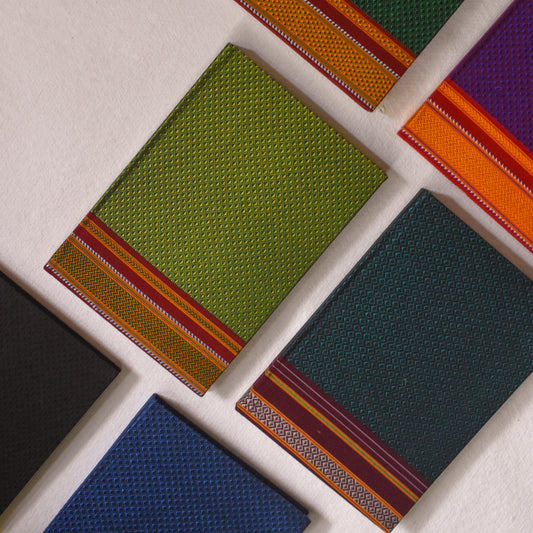Popular Products
ASSORTED SPIRAL HARDCOVER DIARY Assorted
- Rs. 349.00
- Rs. 349.00
- Unit price
- / per
-
Assorted
DHARWADI KHANN HARDCOVER DIARY Black
- Rs. 749.00
Rs. 900.00- Rs. 749.00
- Unit price
- / per
-
Black
-
Dark Blue
-
Dark Green
-
Leaf Green
- Parrot GreenMagenta
GEOMETRIC NOTEBOOKS - A5 [5.8 in × 8.3 in]
- Rs. 699.00
Rs. 750.00- Rs. 699.00
- Unit price
- / per
why pune handmade papers?
a swadeshi legacy since 1940
the handmade paper institute (hmpi) pune, was the brainchild of mahatma gandhi and the innovation of city scientist kb joshi and was officially inaugurated by pandit jawaharlal nehru on august 1, 1940. scientist kb joshi (on whom the institute’s road has been named) was working in an oil mill in newasa, maharashtra, in the 1930s when he met with gandhi.
joshi was already working on paper produced from cotton linters and rags, showed gandhi as an alternative to the paper being imported at the time. the latter, averse to machines being used for paper production, encouraged joshi to work on handmade paper instead. hence in 1936, the land in pune was taken on lease from the agricultural department. joshi was later joined by agriculturist gh gondhalekar, and the bombay khadi samiti was set up.


revival of the handmade paper institute
the handmade paper institute (hmpi) pune, under the maharashtra state khadi & village industries board had pioneered india’s handmade paper industry since 1962. unfortunately due to many challenges and recline the production unit was shut down in mid 2010s.
to retrieve the production unit and livelihoods of the handmade paper artisans, studio mars pvt ltd, one of india’s leading design firms has been appointed as the new management since 2019. today under their brand name of pune handmade papers, studio mars has successfully have been able to address the needs of changing times and evolving sustainable global market needs; this powerful collaboration of world class graphic & product designers along with the handmade paper artisans, have led to amazing designs – a perfect blend of traditional techniques and modern design thinking. the aim is to manifest the beauty of rustic handmade paper & retrieve this handcrafted art by developing a wide range of ethnic contemporary artistic papers & paper products.
- Choosing a selection results in a full page refresh.














